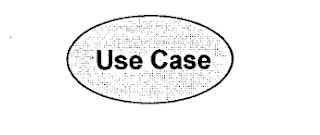Introduction Use Case Diagram Technique
A use case represents an activity performed by the system, which is usually a response based on the request of a user. Two (2) The recommended technique for identifying use cases is the goal user technique and also event decomposition technique. Additional techniques can also be used CRUD technique, which is often used to validate the use cases and enrich the existing list.
Use Cases and Event Decomposition
One technique that can be relied upon to identify use cases is to use the event decomposition techniques. Event decomposition technique is a technique for identifying use cases with external business events determine what happened and how the system should respond. Event decomposition technique begins by identifying all the business events that could result in information systems to respond to it, where the latter every event will culminate in a use case
Started by business events help the analyst to define the use case at a sufficient level of detail. Consider the following example. A system analyst who first be able to identify a use case as a "typing in a customer name on a form". Analyst latter can identify a use cases as a whole process of "adding a new customer". Meanwhile, analyst third one can only define a use case as all transactions involving customers, such as "adding new customers", "updating customer records", "deleting customers", "following up on late-paying customers," or "contacting former customers ". Examples conducted by analyst.
Level of detail appropriate to identify use cases focused on elementary business processes (EBP). An EBP is a task that must be done by one person in one place as a response to a business event, at which time work on the addition of measurable business value and at the time out of the system, the following system data reside on a stable and consistent state. Or in other words EBP is the fundamental tasks of a business process, the positioning system and data on a state that has not changed, which is usually done by one person who responded to a business event.
Each EBP (and every use case) occurs as a response of a business event. An event occurs at a time and place, which can be identified, and can be recorded by the system. Events spur all the processes performed by the system, so by identifying and analyzing all events will be identified use cases that reflect system requirements.
Here is a summary of the steps rather than event decomposition technique to identify use cases:
- Make a list for each external events. Note checklist that has been outlined above.
- Identify and make use case name for any external event, which if require a response from the system.
- Make a list of temporal events. Note checklist that has been outlined above.
- Identify and make the name of the use case for each temporal event, then specify the subject at any time that triggers the use case.
- Make a list of state events.
- Identify and make the name of the use case for each state event that requires the system to change the status.
- When events and use cases are defined, check if there are any events that use perfect technology assumption. Do not to include events that include system controls, such as login, logout, change password, database backup, restore database, etc.



Conversion Conversion Emoticon Emoticon